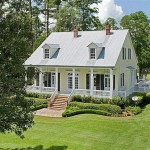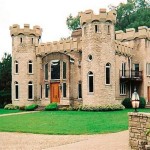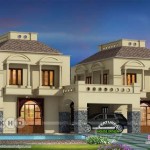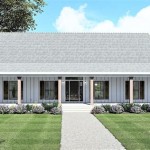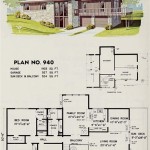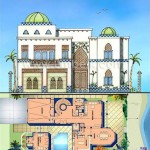New House Plans Photos in Sri Lanka 2024: Trends and Considerations
The Sri Lankan housing market is dynamic, with evolving architectural styles and shifting homeowner preferences. Understanding the latest trends in house plans, particularly those visualized through photographs and renderings, is crucial for prospective homeowners, builders, and real estate professionals. This article will explore some key aspects of new house plans in Sri Lanka for 2024, focusing on architectural styles, material choices, space optimization, and integration with the environment.
The availability of house plan photos provides a valuable resource for visualizing different design options. These images often showcase both interior and exterior perspectives, allowing individuals to assess spatial layouts, material finishes, and overall aesthetic appeal. From modern minimalist designs to traditional Sri Lankan architectural interpretations, the range of available plans caters to a diverse range of tastes and budgets.
The cost of construction in Sri Lanka is influenced by several factors, including material prices, labor costs, and the complexity of the design. Planning a new home requires careful consideration of these economic realities, and selecting a house plan that aligns with available financial resources is essential. Efficient space utilization and the use of locally sourced materials can contribute to cost-effective construction.
Modern Architectural Influences
Modern architecture continues to exert a significant influence on house plans in Sri Lanka. This style often emphasizes clean lines, open floor plans, and large windows that maximize natural light. The integration of indoor and outdoor spaces is a common feature, with designs often incorporating patios, balconies, and landscaped gardens. Modern designs often prioritize functionality and efficiency, with a focus on creating comfortable and practical living environments.
The use of concrete, steel, and glass is prevalent in modern architectural designs. However, incorporating natural materials such as wood and stone can add warmth and texture to the overall aesthetic. Sustainable design principles are also gaining traction, with architects increasingly incorporating energy-efficient features such as solar panels, rainwater harvesting systems, and passive ventilation strategies.
House plan photos showcasing modern designs often highlight the use of open-concept living spaces that combine the living room, dining area, and kitchen. This creates a sense of spaciousness and facilitates social interaction. The strategic placement of windows and skylights can enhance natural light penetration and reduce the reliance on artificial lighting. Minimalist interior design principles are often adopted to complement the clean and uncluttered aesthetic of modern architecture.
Traditional Sri Lankan Architectural Elements
While modern architecture is prominent, traditional Sri Lankan architectural elements are often incorporated into new house plans to create a unique and culturally relevant design. These elements can include features such as tiled roofs, verandas, courtyards, and intricately carved wooden details. Integrating traditional features can add character and charm to a home, while also paying homage to the country's rich architectural heritage.
The use of locally sourced materials such as clay bricks, timber, and natural stone can further enhance the traditional aesthetic. Traditional Sri Lankan houses often feature thick walls that provide thermal insulation, helping to regulate indoor temperatures. Courtyards can also play a role in passive cooling, by promoting air circulation and providing shade.
House plan photos that showcase traditional elements often highlight the use of verandas as outdoor living spaces. These covered porches provide protection from the sun and rain, while also offering views of the surrounding landscape. Intricate carvings and traditional motifs can be incorporated into the design of doors, windows, and furniture. The use of vibrant colors and traditional patterns can also add to the overall aesthetic appeal.
The integration of traditional and modern elements is a common trend in Sri Lankan architecture. This approach allows homeowners to enjoy the benefits of modern amenities while also preserving the cultural heritage of the country. By carefully blending these styles, architects can create homes that are both functional and aesthetically pleasing.
Space Optimization and Functional Design
Space optimization is a critical consideration in house plans, particularly in urban areas where land is limited. Efficient use of space can significantly enhance the functionality and livability of a home. Architects often employ various strategies to maximize space utilization, such as incorporating open floor plans, utilizing vertical space, and designing multi-functional rooms.
Open floor plans can create a sense of spaciousness and allow for flexible use of space. By removing interior walls, the living room, dining area, and kitchen can be seamlessly integrated, creating a large and versatile living area. Vertical space can be utilized by incorporating features such as lofts, mezzanines, and multi-level designs. These features can add visual interest to a home while also providing additional living space.
Multi-functional rooms can serve multiple purposes, allowing homeowners to maximize the use of available space. For example, a guest room can also serve as a home office, or a dining room can be converted into a recreational area. The design of built-in storage solutions can also help to reduce clutter and maximize space utilization.
House plan photos often showcase innovative space-saving solutions. These solutions can include features such as folding furniture, hidden storage compartments, and modular design elements. The careful planning of interior layouts can also contribute to efficient space utilization. The strategic placement of furniture and appliances can create a comfortable and functional living environment.
Consideration should also be given to the flow of movement within the house. Minimizing hallways and maximizing open spaces can create a more fluid and efficient layout. The placement of doors and windows should also be carefully considered to optimize natural light penetration and ventilation.
Sustainable and Eco-Friendly Design Practices
Sustainable and eco-friendly design practices are becoming increasingly important in Sri Lanka. These practices aim to minimize the environmental impact of construction and operation, while also creating healthier and more comfortable living environments. Sustainable design principles can be incorporated into various aspects of a house plan, including material selection, energy efficiency, water conservation, and waste management.
The use of locally sourced and renewable materials can significantly reduce the environmental footprint of a home. Materials such as bamboo, timber, and clay bricks are readily available in Sri Lanka and can be used to construct durable and aesthetically pleasing homes. Energy-efficient features such as solar panels, insulated windows, and energy-efficient appliances can reduce energy consumption and lower utility bills.
Water conservation measures such as rainwater harvesting systems and low-flow fixtures can help to reduce water consumption. Waste management strategies such as composting and recycling can minimize waste generation. The design of passive ventilation systems and shading devices can reduce the reliance on air conditioning, further reducing energy consumption.
House plan photos showcasing sustainable designs often highlight the use of green roofs and vertical gardens. These features can improve air quality, reduce stormwater runoff, and provide insulation. The integration of natural light and ventilation can create a healthier and more comfortable indoor environment. The use of non-toxic building materials can also minimize exposure to harmful chemicals.
Choosing energy-efficient appliances and lighting fixtures is another important aspect of sustainable design. LED lighting, for example, consumes significantly less energy than traditional incandescent bulbs. Energy Star-rated appliances are designed to minimize energy consumption and reduce environmental impact.
The orientation of the house on the building lot can also impact its energy efficiency. Orienting the house to take advantage of natural sunlight and prevailing winds can reduce the need for artificial lighting and air conditioning. Careful planning of landscaping can also provide shade and reduce the heat island effect.
In conclusion, new house plans in Sri Lanka for 2024 reflect a diverse range of architectural styles, material choices, and design principles. By understanding the latest trends and considering the specific needs and preferences of the homeowner, it is possible to create a home that is both functional, aesthetically pleasing, and environmentally sustainable. The availability of house plan photos provides a valuable resource for visualizing different design options and making informed decisions.

Modern Type House In Matara Build Your Dream Home With Gk Homes Lanka

2 Perch House Design Srilanka Tiktok

Explore My Dream Home House Design Plans

Small House Plan For Plot Of 25ft By 40 Call Any Help On 0756 152 068 Fyp Tiktok Trending Tiktokkampala New Newstyleconstruction Viral

Exposed Cement Bricks Form The Pagoda House By Chinthaka Wickramage

15 Trendy Roof Designs For New Builds 2024

House Design Spanish Contemporary Plan 3 Bedroom 7 X 10 5 Meters

Khouse Boutique

Innovative House Design Ideas For Modern Living

1200 Sq Ft House Plan 2 Story Design

